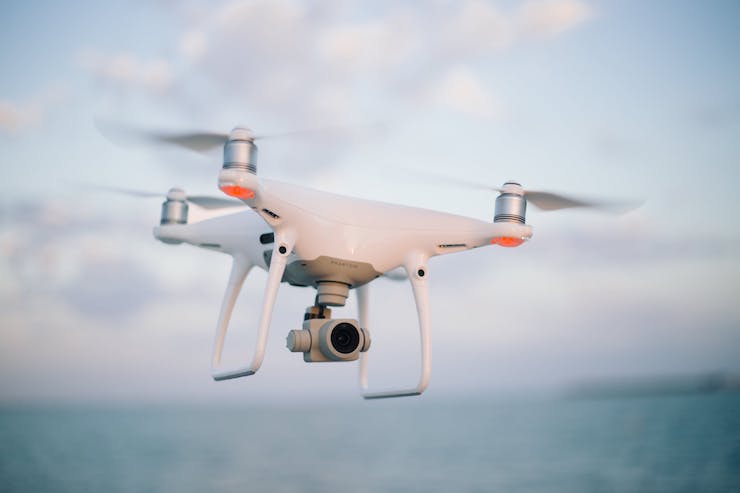
Anyone can buy a drone today. For many drones in the toy category there is no need to be licensed or have the drone registered. If you plan to buy a hobby or larger camera drone vor any commercial purposes, in public spaces, or for racing, then you must meet regulations set forth by the Federal Aviation Administration (FAA). It is a relatively easy process. The license needed is called the Part 107. There are plenty of online courses and materials available to prepare yourself for the test to get a Part 107. The test fees are $150, and can be taken at any one of the 600 FAA approved test locations.
Once you have obtained your Part 107 you must have it on you whenever you are operating your drone. Besides the Part 107, the actual drone or drones you plan to operate also need to be registered. For now this registration number is something that is filed with the FAA and is printed somewhere on the body of the drone. But this has posed a lot of concern because a license on an airborne drone cannot be identified by authorities if needed. Which is why the FAA and many other manned and unmanned aviation organizations are pushing for the implementation of remote identifications for drones.
A remote ID on a drone would allow for authorities, such as police officers, on the ground to gather pertinent information on any drone flying in the area via a remotely broadcast identifier. This idea stemmed greatly from unauthorized drone flights that have wrecked havoc in restricted air spaces like airports, government buildings, and national parks. Recently members of the U.S. House of Representatives Committee on Transportation and Infrastructure met about this issue. They gathered and released a letter to the Department of Transportation stating,”We write to register our ongoing concerns regarding the continuing delay in the issuing of the Federal Aviation Administration’s (FAA) rule requiring remote identification for unmanned aircraft systems (UAS) and urge you to dedicate the necessary staff and resources for the rapid publication of a notice of proposed rulemaking (NPRM) on this subject.”
Some argue that allowing drones to be identified remotely can infringe on operator privacy. As the FAA points out, such a system is necessary as there is no pilot onboard a drone to supply a registration number when needed. Besides helping authorities to manage our already crowded airspace and deter those who would use a drone nefariously, finding a way to create a remote ID system will further the drone industry. The letter to the DOT went on to say, “In addition to addressing the safety and security risks, remote identification will unlock the benefits of advanced UAS operations that will allow for the United States to lead in developing innovative UAS applications such as delivery, surveying, filmmaking, and search and rescue. For example, the final rule on ‘Operation of Small Unmanned Aircraft Systems Over People’ is contingent upon a final action on remote identification. Failure to expeditiously address remote identification curtails these expanded operations, hinders U.S. global competitiveness, and increases the likelihood that innovation will move overseas.”
The bottom line is that anyone operating a drone needs to do so responsibly. But it is also the responsibility of those who create and implement regulations governing drone operations to keep up to date in setting forth the appropriate measures. As stated on the FAA’s website, “Drones or unmanned aircraft systems (UAS) are fundamentally changing aviation, and the FAA is committed to working to fully integrate drones or UAS into the National Airspace System (NAS)…Remote ID is the next step to enable safe, routine drone operations across our nation. This capability will enhance safety and security by allowing the FAA, law enforcement, and Federal security agencies to identify drones flying in their jurisdiction.”
|